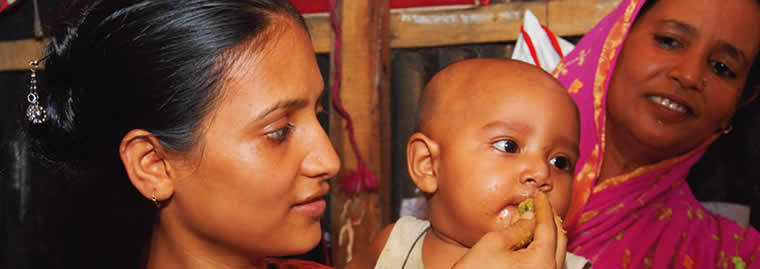Scaling Up Impact on Nutrition: What Will it Take and How Will We Get There?
Transform Nutrition, September 2015
Transform Nutrition, September 2015
Join us on May 26th to learn about different Mission-level approaches to promoting multi-sectoral coordination and collaboration to support nutrition outcomes and what we’ve learned throughout the process.
Financing is a key piece of any effort to improve nutrition at scale. In its recently-released Nutrition Strategy, USAID highlights the importance of financial systems, stating that political will for nutrition must be reflected through financial support, both at the national and sub-national level. A number of very robust costing activities have been completed, or are underway, by MQSUN, UNICEF, the World Bank, and others.

Recognizing the need for concerted action to increase nutrition impacts through at-scale social and behavior change communication (SBCC) programs, SPRING partnered with the Global Alliance for Improved Nutrition (GAIN) to convene a gathering of global SBCC thought leaders from across public and private sectors to develop a strategic research and implementation agenda and action plan for accelerated nutrition gains through better SBCC programs.
Social and behavior change communication (SBCC) is a crucial element of any nutrition intervention. There have been many successful nutrition behavior change projects around the world, but most are not implemented at large scale, and sustainability or cost-effectiveness of the interventions are not known. Throughout 2014, the Global Alliance for Improved Nutrition (GAIN) and SPRING reviewed the evidence and consulted global thought leaders to identify priorities for nutrition behavior change. Working at scale to maximize nutrition impact emerged as an urgent priority.

This report presents a strategic agenda for nutrition Social and Behavior Change Communication (SBCC) to streamline priorities and investments by nutrition stakeholders in order to maximize the contribution of SBCC in reaching global nutrition targets.
A&T implements multi-component programs that make strategic use of data to plan, assess, and evaluate program impact to improve child feeding practices. The aim is to disseminate the models and the learnings widely, encouraging adaptation or replication of at-scale implementation in other settings.
The Harvesting Nutrition Contest award ceremony on February 19, 2015 showcased three agriculture-nutrition projects that demonstrated outstanding innovation, potential for impact, or scalability. Ag2Nut members often make or receive requests for case studies of "what works" in agriculture-nutrition programming, and this call gave the community an opportunity to dive in.
Authors: Alexis D’Agostino, Meghan Anson, Anu Narayan, Tim Williams